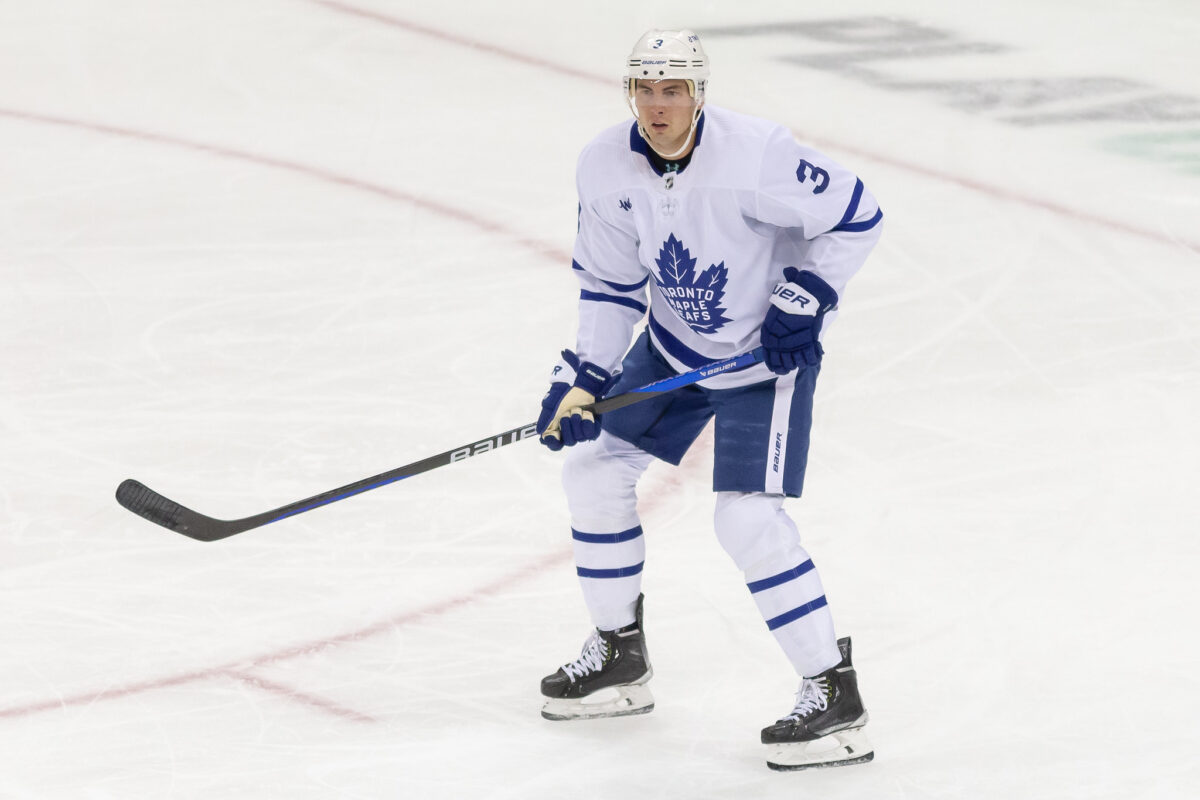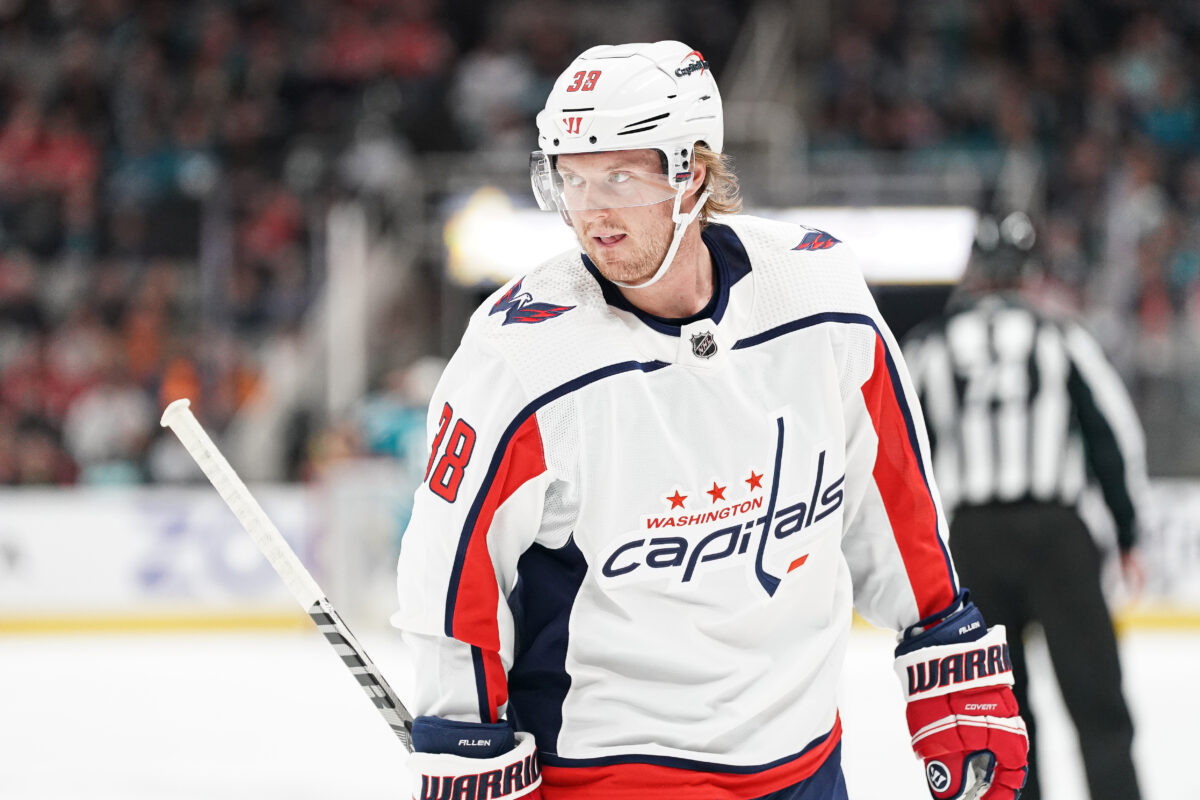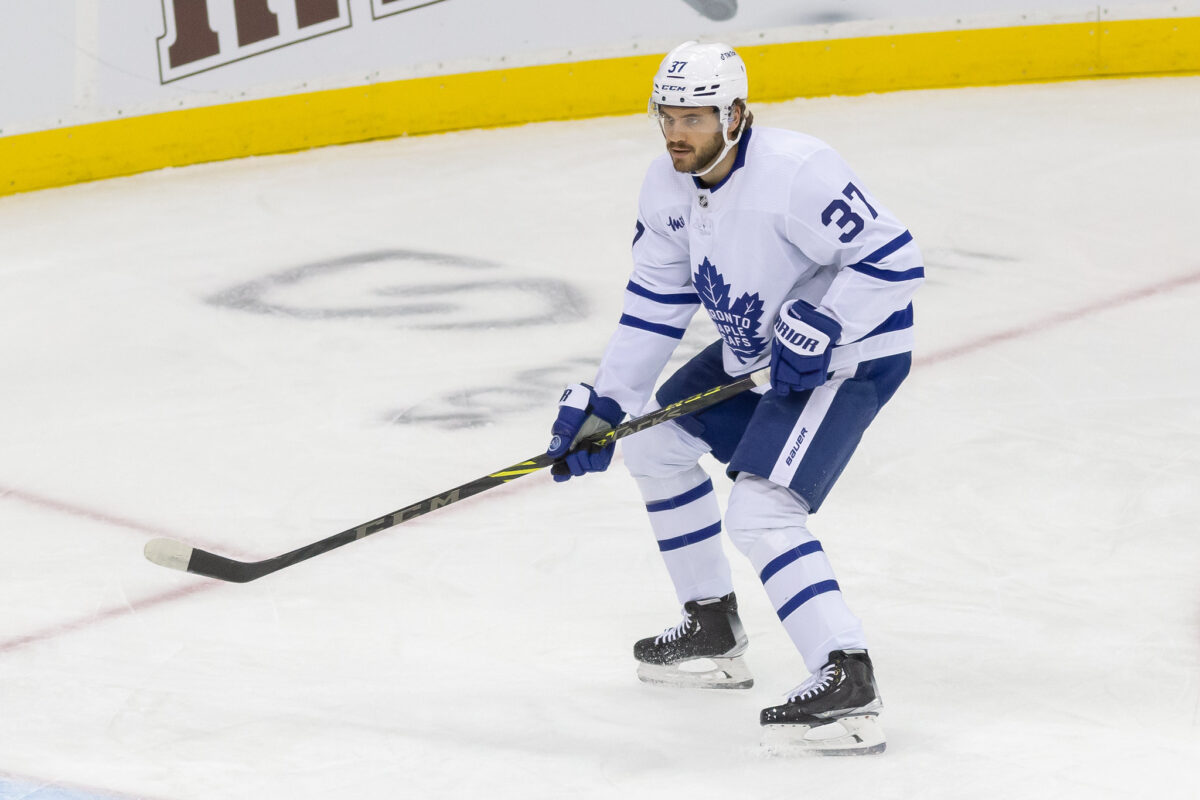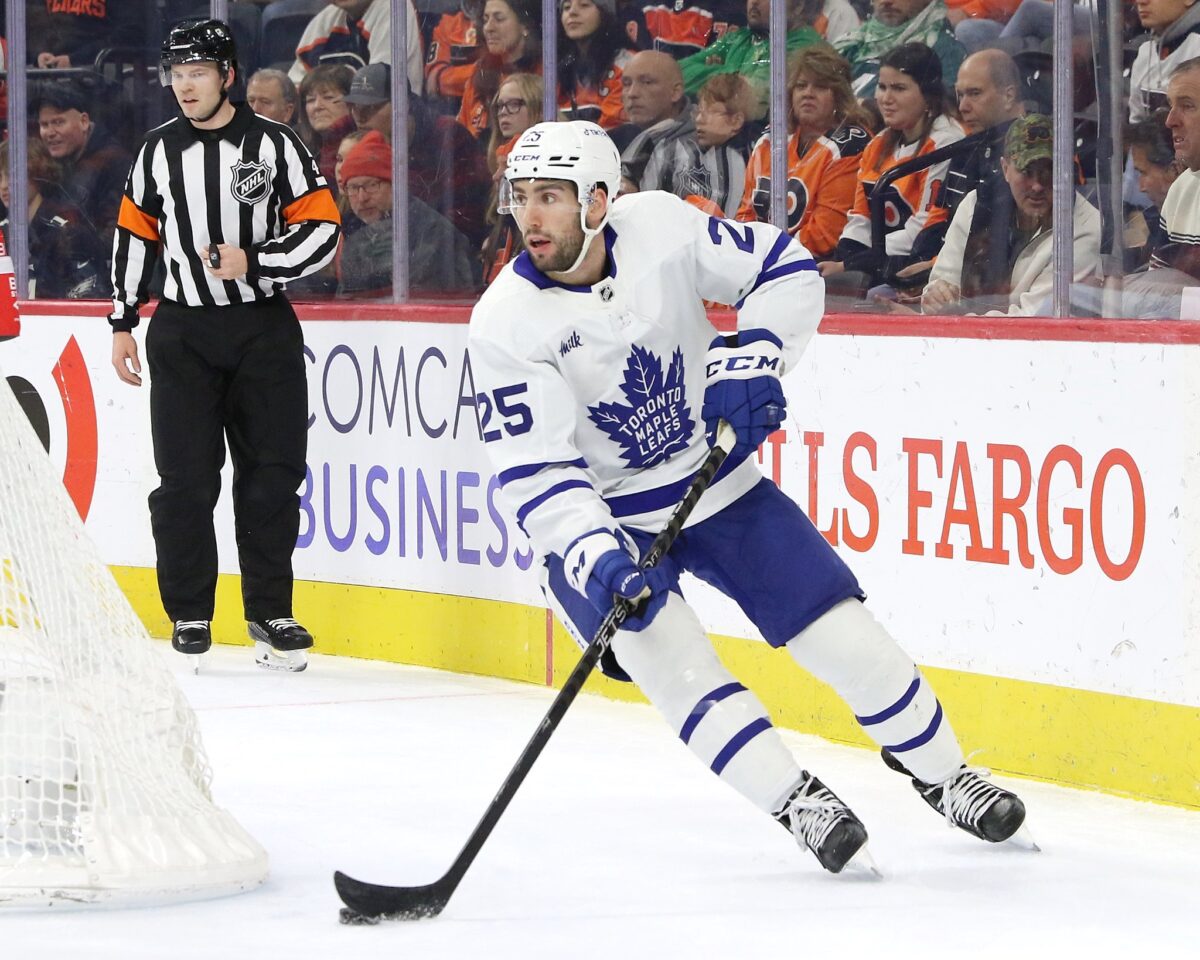The Toronto Maple Leafs have made a number of changes this offseason, the biggest one at the top when team president Brendan Shanahan did not extend a contract renewal to General Manager (GM) Kyle Dubas. That move allowed Dubas to walk to the Pittsburgh Penguins. In Dubas’ place, Shanahan hired former Calgary Flames GM Brad Treliving to take over the role.
To this point in the offseason, Treliving has made a number of moves, bringing in players such as Tyler Bertuzzi, Max Domi, and John Klingberg, to name a few. At the same time, he let Michael Bunting, Alex Kerfoot, and Justin Holl leave for greener pastures (greener as in money).

There is a lot of debate as to whether this team is better or worse than the one that took to the ice in the 2022-23 season opener. The general consensus seems to be the changes made at the forward position are improvements; but the defense is worse.
Our goal today is to examine the Maple Leafs’ blue line to determine if the defense is indeed worse.
Comparing This Season’s Roster With Last Season’s Roster
Let’s look at the opening night roster from last season and compare it to what we think the roster will look like on Oct. 11, when the Maple Leafs play their home opener against the Montreal Canadians.
| Opening Game Roster 2022-23 | Opening Game Roster 2023-24 |
| Morgan Rielly | Morgan Rielly |
| TL Brodie | TJ Brodie |
| Jake Muzzin | Jake McCabe |
| Mark Giordano | Mark Giordano |
| Justin Holl | Timothy Liljegren |
| Rasmus Sandin | John Klingberg |
This Season’s Returning Maple Leafs Players
Unless they are injured during training camp, or Treliving makes a deal that involves one of these players, it appears the three returning players will be Rielly, Brodie, and Giordano. Should we expect those players to be any better or worse than they were last season?
Related: Toronto Maple Leafs Defence: Time for Some Changes
On the downside, Brodie and Giordano are one year older. We wouldn’t expect Brodie’s skills to erode very much. He’s 33 and doesn’t play an overly physical game. Instead, he uses strong positioning and focuses more on the puck than the body.
Giordano could be a different story. He will turn 40 on Oct. 3. While he’s still a capable defenseman, he demonstrated in the playoffs last season that he’s not capable of playing 20 effective minutes per game. Few 40-year-old players are. In fact, it’s rare to see someone that old in the NHL; and those who are still playing at that age usually see a rapid deterioration of their games.
On the upside, Rielly is in his prime at 29. He’s coming off a postseason in which he was the Maple Leafs best player. Not only did Rielly score 12 points in 11 playoff games, he was strong defensively as well. We see no reason why Rielly won’t carry that play into this season.
The Two Jakes: Muzzin vs. McCabe
There were huge question marks involving Jake Muzzin going into last year. He was coming off of an injury-plagued 2021-22 season. There were questions about how his injury-ravaged body would hold up, especially with the physical game Muzzin needed to play to be effective. As it was, those questions were answered in the wrong way for the Maple Leafs. Muzzin suffered what appears to be a career-ending spine injury in just his fourth game of the season.
Related: Morgan Rielly is the Maple Leafs’ Undisputed Best Defenseman
Toward the end of last season, the Maple Leafs acquired Jake McCabe, who plays the same style of physical game as Muzzin. While we can’t say McCabe is as good as Muzzin once was, he is better than the Muzzin he replaced. McCabe was a second-pairing defender on mediocre teams in Buffalo and Chicago; however, he did show some flaws in his game in the playoffs last season. There is still a question of whether he can be an effective second-pairing guy on a contending team like the Maple Leafs.
Overall, however, we have to give McCabe the edge over Muzzin.
Comparing Sandin With Klingberg
This is a tough comparison to make. Sandin came onto the scene with a bang. He was a first-round pick and quickly became the Maple Leafs top prospect. He showed poise and talent both with the Marlies and the Maple Leafs. He was strong with the puck, and despite his lack of size for a defenseman (5-foot-11 and 180 pounds), showed some physicality.
For whatever reason, be it injuries or lack of ice time due to COVID, Sandin’s development seems to stall. He received a lot of criticism for costly errors he made in the first-round loss to the Montreal Canadians in 2021.

Klingberg was a fifth-round pick of the Dallas Stars; and, similar to Sandin, had a promising debut in the NHL. He scored 11 goals and 40 points in a rookie season where he finished fifth in Calder Trophy voting. Klingberg built off his rookie season and followed it up with four more strong seasons where he scored between 45 and 67 points per season. He was also very good defensively and gained some Norris votes in two of those seasons.
Then the wheels fell off his game. For whatever reason, Klingberg has struggled the past four seasons to duplicate the level of play he achieved in his first five seasons. After being a stalwart on the Dallas defense for five seasons, Klingberg finds himself playing for his fourth team in three seasons.
One interesting note is that last season Klingberg had 10 goals and 33 points in 67 games played, while Sandin had seven goals and 35 points in 71 games played. Sandin was plus-3 in plus/minus for a good team, while Klingberg was minus-38 for the terrible Anaheim Ducks.
Related: 12 of the Fastest Skaters Ever in the NHL
After Klingberg was traded to the Minnesota Wild at the deadline last season, he was plus-3 in 17 regular-season games for the Wild. In Minnesota’s first-round loss to the Dallas Stars, Klingberg did score a goal and four points and was plus-two in four playoff games.
It appears that maybe, and we stress maybe, Klingberg plays better on better teams. If that’s true, then he should be an overall improvement from Sandin. However, that’s a big “If” and remains to be seen. There is also a chance that Klingberg could be the second coming of Tyson Barrie.
Comparing Holl With Liljegren
With Holl and Liljegren, we are comparing a late-blooming 31-year-old at or past his prime with a young 24-year-old player on the rise. We want to note that while he was on the Maple Leafs roster last season, Liljegren suffered a hernia in offseason training that required surgery and forced him to miss training camp and the first 11 games of the season.

These two defensemen play such a different type of game it is difficult to compare them directly. Holl’s strength was his play without the puck, his ability to get into the shooting lanes, block shots and use his 6-foot-3, 200-pound body to box out players in front of the net. Liljegren plays a better all-around game that combines offensive skills with a decent but not mistake-free defensive game. He’s relatively physical for his NHL-average size of 6-foot-1 and 195 pounds.
If we compare underlying stats, Liljegren has put up much better overall numbers than Holl. However, he’s done so in a primarily bottom-pairing role. Holl has played an average of four minutes more per game in the top four.
Related: Matt Murray’s Legacy with the Penguins
Between the two players, Liljegren is by far the more talented. However, being more talented does not necessarily mean being more effective.
Differences in Defensive Depth
The Maple Leafs started the season with six healthy defensemen on their main roster and two non-roster defensemen with NHL experience with the Marlies. Those two players were Jordie Benn and Victor Mete. Mete played 11 games for the Maple Leafs that season, and Benn played 12.
This season, they have (for the moment) a seventh defenseman on their roster in Conor Timmins. They also have Simon Benoit, William Lagesson, and Maxime Lajoie. All these players have NHL experience as non-roster depth players.

The 2023-24 version of the Maple Leafs definitely has the advantage over last season’s team when it comes to defensive depth.
Benoit Might Be a Wild Card
There is one “Wild Card” player in the mix this season, Simon Benoit. When Treliving was first hired, he stated right off the bat that he wanted this team to play with more “snot.” He then acquired forwards like Bertuzzi, Domi, and Ryan Reaves. Until a little over a week ago, he did little to address that aspect of the defense. Then he signed the 25-year-old, 6-foot-3 and 205-pound Benoit.
Benoit fills that bill. He has recorded 404 hits in just 137 games in the NHL. He has had ten fights in his professional career, most notably against Tom Wilson and Zack Kassian.
The biggest question with Benoit is his ability to play defense. He was horribly miscast in a top-four role with the woeful Ducks last season. There’s one sentence from an article by THW writer Charlie Hiller that might scare a lot of Maple Leafs’ fans. Hiller wrote, “there were situations where Benoit ……… looked lost on the ice. While some of the issues were related to having him paired with John Klingberg.”
Related: Ranking The Maple Leafs’ 7 Offseason Signings
We have to guess that we will see Benoit at some point in time, whether it be due to injuries, trades, or just an effort to add more physicality to the blue line. While he will definitely bring more “Snot” to the lineup, we don’t know if he will make it any better.
The Bottom Line
To be completely honest, we find it impossible to come up with a firm conclusion on whether or not the present version of the Maple Leafs’ defense is any better or any worse than the defense that started last season. We believe it looks better on paper; however, there remain way too many questions that need to be answered.
We will see soon enough.
[Note: I want to thank long-time Maple Leafs fan Stan Smith for collaborating with me on this post. Stan’s Facebook profile can be found here.]
